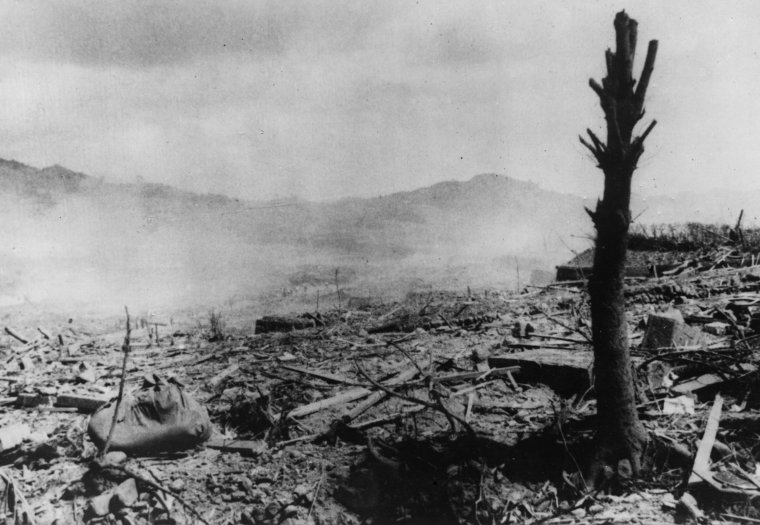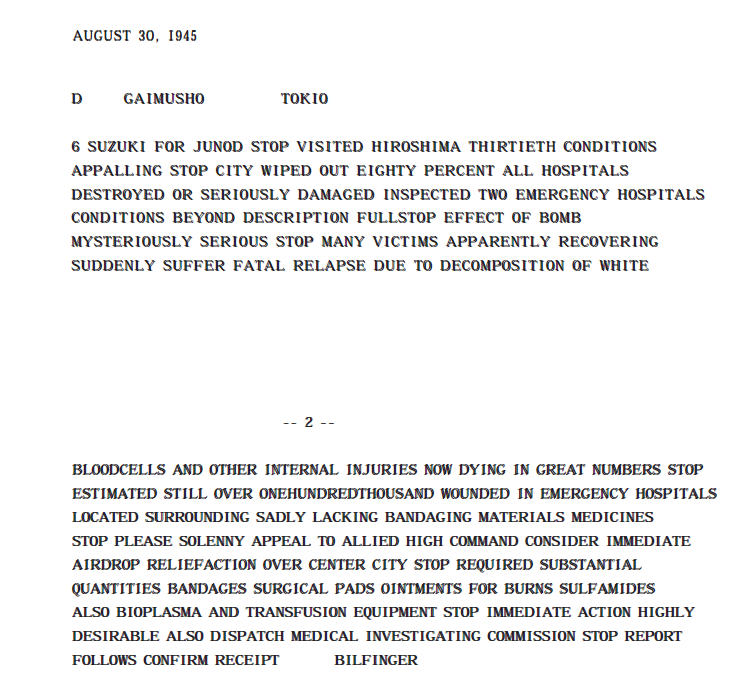Oppenheimer's all-destroying weapon

78 years of memory of Hiroshima and Nagasaki
There's no getting around it: 'Oppenheimer' is currently a hit in movie theaters. The film is about the life and work of physicist J. Robert Oppenheimer, who played a fundamental role in the development of the atomic bomb, the most destructive weapon ever made. Thus, 78 years ago, the atomic bomb destroyed the Japanese cities of Hiroshima and Nagasaki.
In Hiroshima on Aug. 6, 1945, the nuclear bomb killed 70,000 people in an instant. Radiation, fire and lack of vital resources eventually raised this death toll to 140,000 - accounting for 40 percent of the population. In addition, 11.4 km² of the city was razed to the ground.
Three days later, the population of Nagasaki suffered a similar fate when a 21,000-ton atomic bomb wiped out the city and its inhabitants. 39,000 people lost their lives instantly, with the final death toll reaching 74,000 people or 60% of the population.
Disastrous humanitarian consequences
A few weeks after the attacks, Fritz Bilfinger - a delegate from the International Committee of the Red Cross (ICRC) - arrived in Hiroshima to survey the damage. The telegram he sent back to his colleagues in Tokyo painted a terrifying picture:
"city wiped out; eighty percent of all hospitals destroyed or seriously damaged; two emergency hospitals inspected, conditions indescribable, complete stop; effects of bomb mysteriously serious, stop."
He also explained that many victims who were seemingly on the mend suddenly suffered fatal relapses due to white blood cell decomposition and other internal injuries. In conclusion, he called for the urgent need for substantial humanitarian assistance.
 Telegram from Fritz Bilgfinger, ICRC, August 30, 1945
Telegram from Fritz Bilgfinger, ICRC, August 30, 1945
A world free of nuclear weapons
The film underscores the power and catastrophic nature of the atomic bomb at the time.
Today, the disastrous consequences of the nuclear attacks on Hiroshima and Nagasaki would pale beside the irreversible human and material damage a modern atomic bomb would cause. It therefore constitutes a powerful reminder to continue to advocate for a world free of nuclear weapons. Because of the extensive and long-lasting humanitarian consequences, the lack of sufficient aid capacity to adequately respond to such a disaster, and the extreme doubt about the compatibility of the use of nuclear weapons with international humanitarian law.
The International Red Cross - and Red Crescent Movement have deep and long-standing expertise in relief efforts and first-hand experience with the impact of nuclear weapons in Hiroshima and Nagasaki. That is why, since 1945, it has been calling on states to completely eliminate nuclear weapons so that they can never be used again.
Only then can we honor the memory of the victims of Hiroshima and Nagasaki and protect future generations from the catastrophic consequences of nuclear weapons use.
